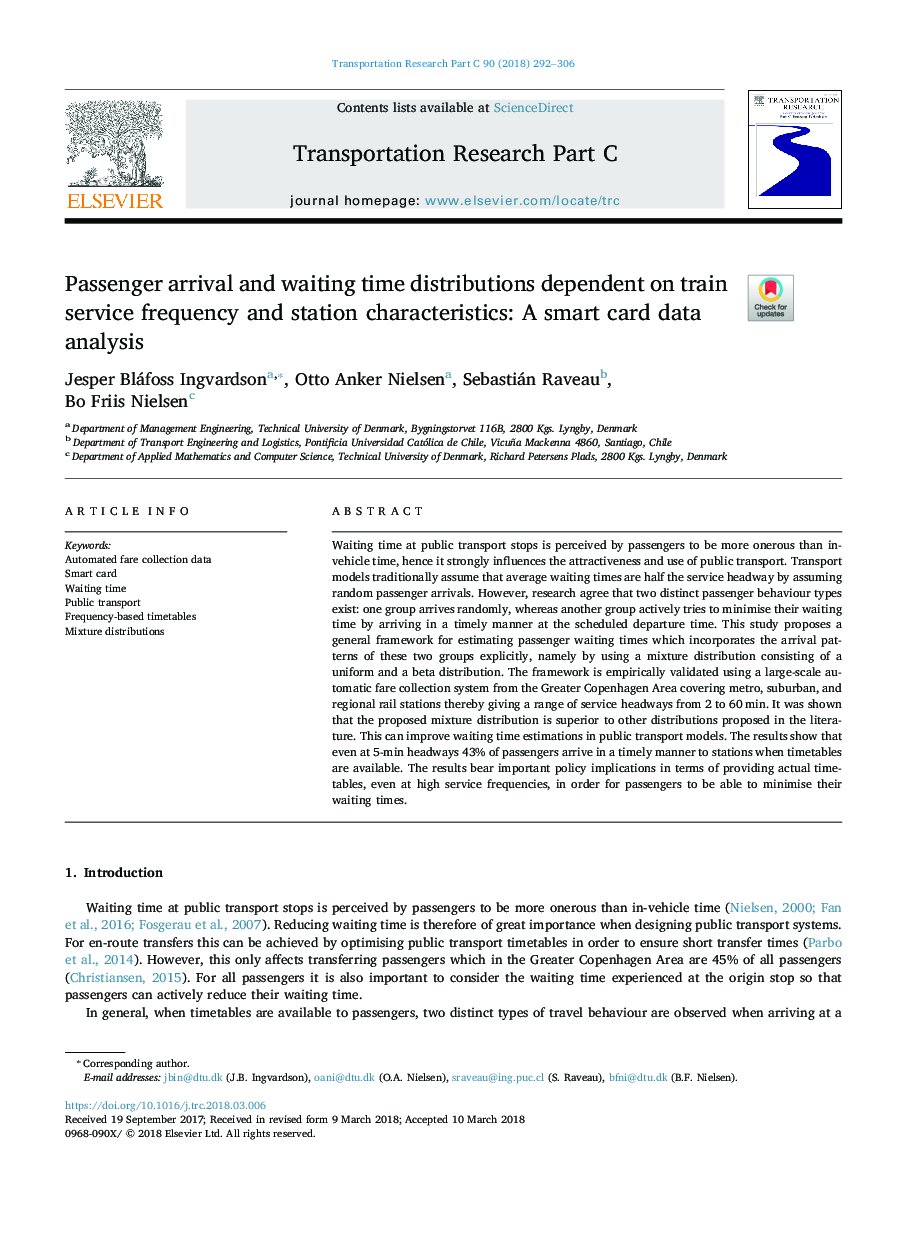| Article ID | Journal | Published Year | Pages | File Type |
|---|---|---|---|---|
| 6936013 | Transportation Research Part C: Emerging Technologies | 2018 | 15 Pages |
Abstract
Waiting time at public transport stops is perceived by passengers to be more onerous than in-vehicle time, hence it strongly influences the attractiveness and use of public transport. Transport models traditionally assume that average waiting times are half the service headway by assuming random passenger arrivals. However, research agree that two distinct passenger behaviour types exist: one group arrives randomly, whereas another group actively tries to minimise their waiting time by arriving in a timely manner at the scheduled departure time. This study proposes a general framework for estimating passenger waiting times which incorporates the arrival patterns of these two groups explicitly, namely by using a mixture distribution consisting of a uniform and a beta distribution. The framework is empirically validated using a large-scale automatic fare collection system from the Greater Copenhagen Area covering metro, suburban, and regional rail stations thereby giving a range of service headways from 2 to 60â¯min. It was shown that the proposed mixture distribution is superior to other distributions proposed in the literature. This can improve waiting time estimations in public transport models. The results show that even at 5-min headways 43% of passengers arrive in a timely manner to stations when timetables are available. The results bear important policy implications in terms of providing actual timetables, even at high service frequencies, in order for passengers to be able to minimise their waiting times.
Related Topics
Physical Sciences and Engineering
Computer Science
Computer Science Applications
Authors
Jesper Bláfoss Ingvardson, Otto Anker Nielsen, Sebastián Raveau, Bo Friis Nielsen,
